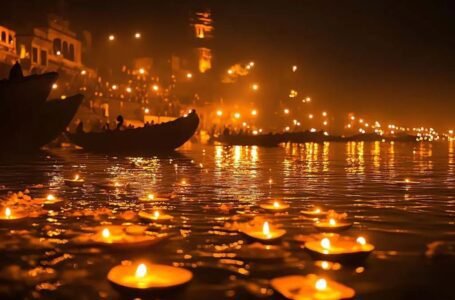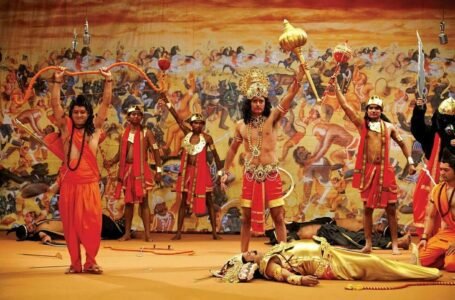Panchmura Terracotta: A Dying Art of West Bengal

Panchmura, a small village in the Bankura district of West Bengal, is renowned for its exquisite terracotta art. While the village is widely recognized for its traditional Bankura horses, its unique terracotta paintings—once an integral part of temple murals and architectural decoration—are now a fading tradition. The distinctive style of Panchmura terracotta painting, characterized by intricate storytelling through baked clay, is rooted in local myths, folklore, and religious themes. However, with declining patronage and changing artistic trends, fewer artisans continue to practice this remarkable craft today. This article explores the origins, artistic techniques, cultural significance, reasons for its decline, and potential avenues for revival.
The tradition of terracotta art in Bengal dates back to the ancient period, with influences seen in the Mauryan and Gupta dynasties. Terracotta, a form of baked clay, was widely used for sculptures, tiles, and murals due to the region’s abundance of alluvial soil.
Panchmura’s terracotta tradition is closely linked to the architectural heritage of Bengal’s temples. From the 16th to the 19th century, terracotta tiles and plaques adorned temple walls, depicting narratives from Hindu epics like the Ramayana and Mahabharata, as well as episodes from Krishna Leela. The Malla kings of Bishnupur, who were great patrons of art and architecture, encouraged the use of terracotta reliefs to narrate sacred stories on temple facades. These murals were not merely decorative but served as visual scriptures for the largely illiterate rural populace.
The creation of Panchmura terracotta paintings is an elaborate process requiring skill and patience. The following are the key steps involved:
- Clay Collection and Preparation: Artisans collect fine alluvial clay from the banks of the nearby rivers. The clay is refined by removing impurities and mixed with water to achieve the right consistency.
- Molding and Carving: The artist shapes clay tiles or plaques, either by hand or with the help of wooden molds. Intricate details are hand-carved using chisels and small tools before the clay hardens.
- Drying and Firing: The tiles are sun-dried and then fired in a kiln at temperatures ranging between 700°C and 900°C, which gives them a characteristic reddish-brown hue.
- Painting and Finishing: Unlike regular terracotta sculptures, Panchmura terracotta tiles were traditionally painted using natural pigments extracted from minerals, vegetables, and even burnt clay. Over time, synthetic colors have also been introduced.
The thematic essence of these paintings lies in their intricate storytelling. Common motifs include scenes from Hindu mythology, tribal folklore, daily village life, and even colonial-era influences that crept in during British rule.
Despite its historical importance and artistic excellence, the practice of terracotta painting in Panchmura has declined significantly in the past few decades. Several factors contribute to this unfortunate trend:
- Changing Architectural Preferences: Modern construction materials like cement, steel, and tiles have replaced the traditional use of terracotta in temple and home decor.
- Declining Patronage: Historically, temples and wealthy patrons commissioned these works. However, in contemporary times, the demand for hand-crafted terracotta murals has dwindled.
- Lack of Financial Support: The cost of producing handmade terracotta tiles is high, and artisans struggle to compete with mass-produced alternatives. Many artisans have abandoned the craft due to poor financial returns.
- Migration of Artisans: Younger generations are reluctant to pursue terracotta craftsmanship, preferring urban jobs that promise financial security. As a result, the number of skilled artisans has diminished.
- Limited Market and Awareness: Unlike the Bankura horse, which has gained national recognition, terracotta murals from Panchmura have not been widely promoted. This lack of exposure has led to reduced commercial viability.
Recognizing the cultural and artistic value of Panchmura’s terracotta heritage, several initiatives have been undertaken to preserve and revive the craft:
- Government Support and Training Programs: The West Bengal government, along with organizations like the West Bengal Khadi and Village Industries Board, has introduced training programs to encourage new artisans.
- Artisan Cooperatives and Exhibitions: Cooperatives help artisans sell their work at national and international handicraft fairs, providing them with a platform to showcase their talent.
- Integration with Contemporary Design: Modern designers are experimenting with terracotta in home decor, blending traditional motifs with contemporary aesthetics.
- Academic and Institutional Documentation: Universities and cultural organizations are conducting research and documentation to archive traditional techniques for future generations.
- Tourism Promotion: Panchmura is being promoted as a heritage tourism site where visitors can experience live demonstrations of terracotta craftsmanship.
Panchmura’s terracotta paintings stand as a testament to Bengal’s rich artistic heritage, narrating stories of faith, culture, and tradition through the medium of baked clay. However, despite its historical significance, this unique art form faces an uncertain future. The gradual decline of terracotta painting in Panchmura is a reflection of the larger challenges that traditional art forms encounter in an era dominated by industrial production and modern architectural trends.
The survival of this craft depends on a multifaceted approach that involves the combined efforts of artisans, government bodies, cultural organizations, and art enthusiasts. Financial assistance in the form of subsidies and grants can provide much-needed relief to struggling artisans, allowing them to sustain their craft without financial hardship. Additionally, modern technological interventions, such as digital marketing and e-commerce platforms, can expand the market for Panchmura’s terracotta paintings beyond local and national boundaries.
Educational institutions also play a crucial role in preserving this tradition. Introducing terracotta art in school curricula and organizing workshops can encourage young minds to appreciate and perhaps even take up the craft. Furthermore, collaborations between contemporary designers and traditional artisans can give Panchmura’s terracotta paintings a new lease of life, making them relevant to modern aesthetics and interior decor trends.
Finally, public awareness and appreciation are fundamental to the survival of any art form. By promoting Panchmura as a cultural tourism hub, visitors can witness the artistry firsthand, interact with artisans, and contribute to their livelihood. If adequate steps are taken, Panchmura’s terracotta paintings can transition from being a dying tradition to a thriving artistic legacy.
While the challenges are significant, the potential for revival is immense. With the right initiatives and an appreciation for the cultural depth of this art form, Panchmura’s terracotta paintings can continue to tell their stories, not just through temple walls, but in homes, museums, and public spaces across the world.


